10 Things to Love About Modern Agriculture
February 8, 2021
By Ann Foster Thelen
Iowa has always been a national and global leader in agriculture, ranking No. 1 in the production of pork, corn, eggs and soybeans – while ranking in the top 5 for red meat production, number of farms, cattle on feed and total value of ag exports. About 90% of Iowa's land is dedicated to farming.
Today, Iowa is becoming increasingly known for another leadership role – as an engine for agricultural innovation and entrepreneurship. These roles converge in Iowa – America's Cultivation Corridor – to solve challenges and create long-term, impactful solutions.
Across every corner of the state, collaboration and entrepreneurship fuel agriculture and food innovation. There's a lot to love about modern agriculture in Iowa, so we've compiled a top 10 list of things that get our hearts pumping with excitement and pride.
1. Cover Crops
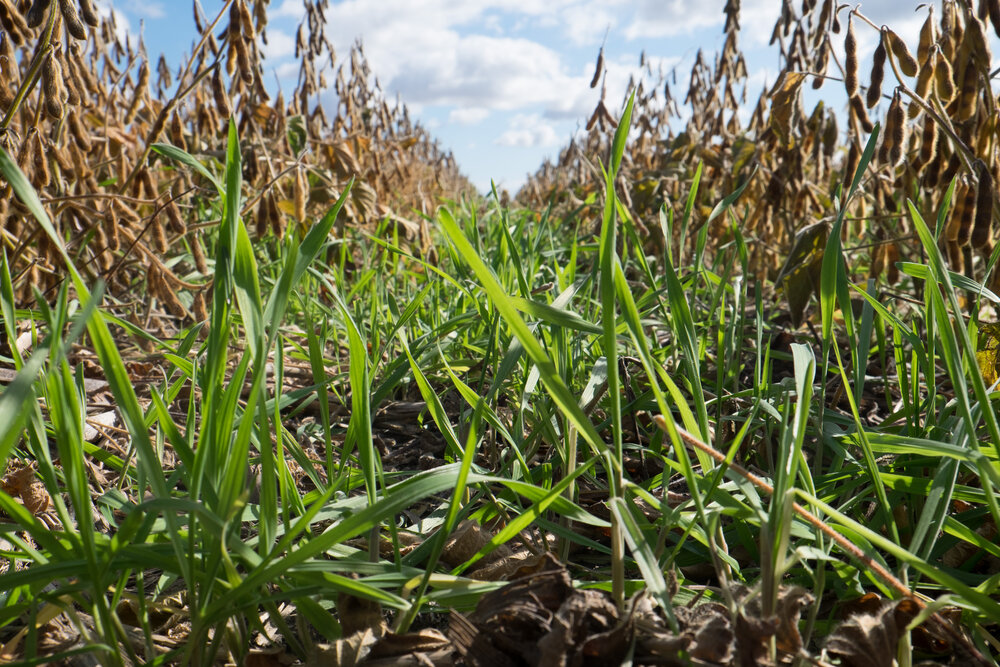
Photo credit: Joseph L. Murphy/Iowa Soybean Association
Farmers use cover crops – such as cereal rye, peas, turnips, radishes and clover – to keep a cover on farmland between harvest and planting seasons. Grown in fields after corn and soybeans are harvested, these small plants have big benefits for soil fertility and conservation.
Soil is a living organism, and cover crops add microbial benefits and help the soil breathe. The benefits of cover crops are abundant, including helping to retain nutrients in the soil, building organic matter to improve soil structure and providing forage for grazing animals. Additionally, the roots help keep soil and nitrates in place and out of waterways.
In Iowa, the number of cover crop acres has increased dramatically over the past several years. Ten years ago, Iowa farmers were planting fewer than 10,000 acres of cover crops. Today, more than 2 million acres of Iowa farmland is blanketed with cover crops.
2. Economic Impact
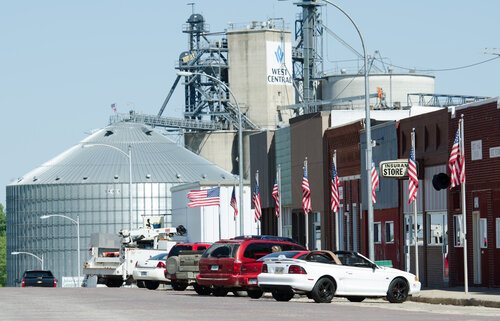
Photo credit: Joseph L. Murphy/Iowa Soybean Association
Iowa’s farmers directly impact communities by purchasing vehicles, machinery, hardware, feed and other items in local towns. According to the most recent U.S. Department of Agriculture (USDA) Census of Agriculture, there are nearly 400,000 jobs in agriculture collectively in the state, and 20% of Iowans are employed by ag and ag-related industries earning $22.2 billion in annual wages. These jobs help boost rural economic development and contribute to the prosperity of rural areas.
Whether it’s contributing to fundraisers, supporting schools or providing meals to frontline workers in a crisis, farmers and ag-related businesses are part of the glue that holds Iowa’s communities together.
3. Environment and Recycling
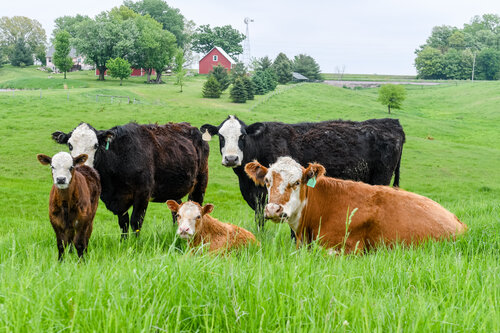
Known as the ultimate recyclers, cows upcycle nutrients into your favorite cuts of beef. Photo credit: Joseph L. Murphy/Iowa Soybean Association
Farmers are active stewards of the land, not only because it’s their livelihood but also because they want to leave it even better for the next generation. For example, farmers provide one pound of lean pork using 41% less water and 78% less land than in 1959.
Farms are the true definition of sustainability. Cows are often raised on pastures, where the land couldn’t be viably used for something else. Known as the ultimate recyclers, cows and other ruminant animals have unique stomachs that allow them to eat parts of plants and foods that humans can’t eat, such as almond hulls or wheat straw, etc. Dairy cows unlock nutrition from these parts of food and turn them into nutrient-rich milk, and beef cattle upcycle these nutrients into your favorite cuts of beef.
4. Family Generations
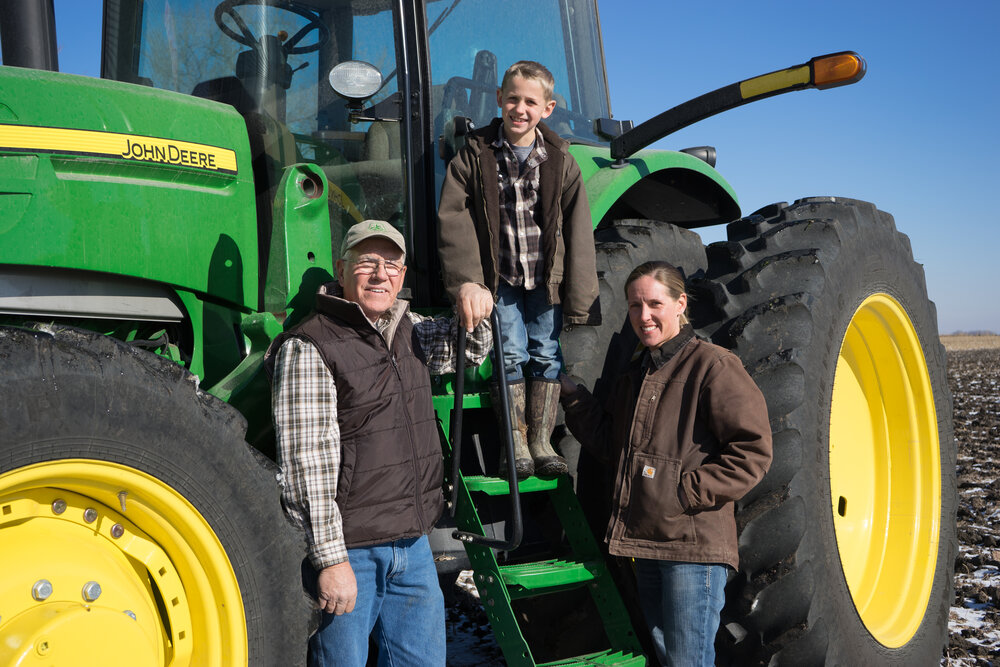
Photo credit: Joseph L. Murphy/Iowa Soybean Association
Farming is a family affair in Iowa. Stephanie Essick, a fourth-generation farmer from Dickens in northwest Iowa, is one of 49,065 women who farm in Iowa. She raises soybeans, corn and hay with her father and serves on the Iowa Soybean Association board.
Iowa has 86,104 farms, and family farms comprise 95% of all the state's farms – many of those are second, third and fourth-generation family farms. While farms cover more than 30 million of Iowa's acres, each farm's average size is 355 acres, according to the USDA Census of Agriculture.
5. High-Quality Feed
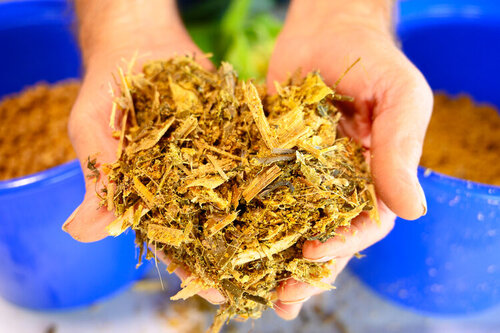
A handful of high-quality feed, consisting of hay, corn silage, distiller grain and liquid protein. Photo credit: Joseph L. Murphy/Iowa Soybean Association
High-quality feed is essential for raising healthy livestock. Throughout the year, farmers typically work with a nutritionist and a veterinarian to ensure animal health across the lifespan, as well as feed efficiency and meat quality.
Much of the soybeans grown in Iowa are converted into feed for livestock. Livestock feed for the pork, poultry, aquaculture and cattle industries remains the largest market for Iowa soybeans. One out of five rows of soybeans grown in the state are consumed by pigs raised in Iowa.
6. Investments in Conservation
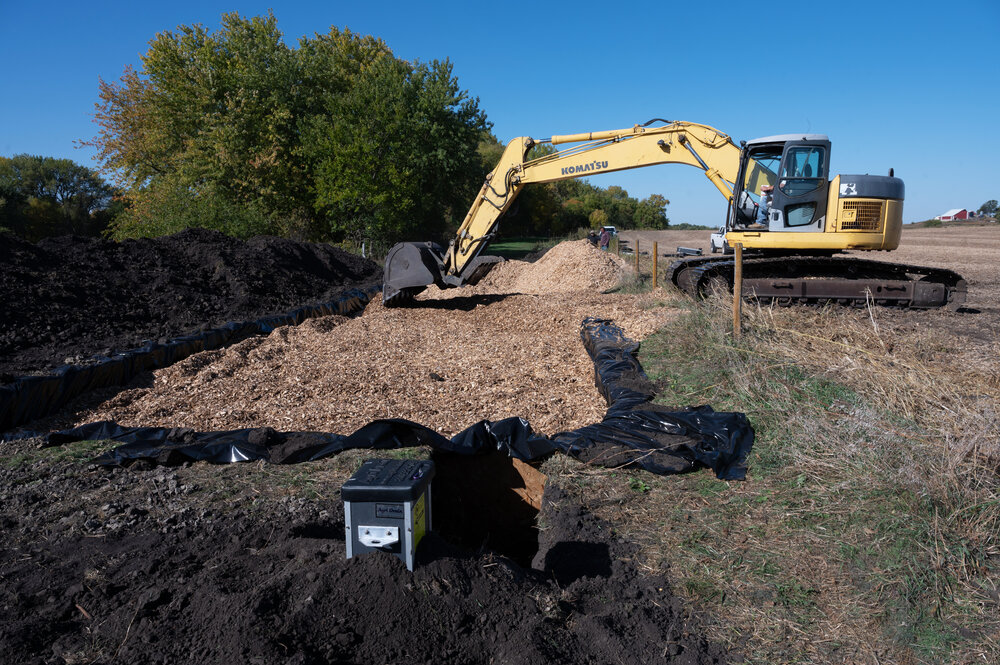
Photo credit: Joseph L. Murphy/Iowa Soybean Association
In the past 10 years, Iowa farmers have invested billions of dollars in research and conservation. One example is the construction of bioreactors. A bioreactor is an edge-of-field treatment process that allows farmers to reduce the amount of nitrate leaving the field from a tile line, which improves the water quality of the receiving stream. A bioreactor consists of a buried pit filled with a carbon source – such as wood chips – through which tile water is diverted. The carbon provides a food source for microorganisms that use the nitrate to metabolize the carbon, converting the nitrate to harmless atmospheric nitrogen gas.
7. Livestock Comfort
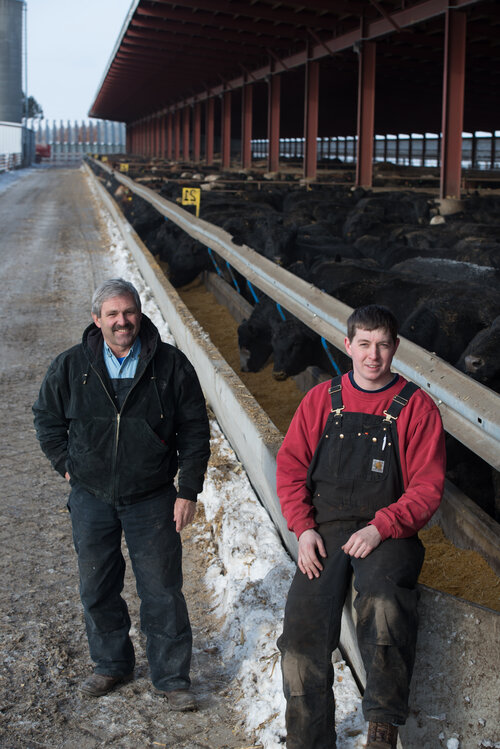
The father and son duo, Bill and Tim Couser of Nevada, use modern animal housing, such as monoslope barns, to keep livestock safe and comfortable all year long. Photo credit: Joseph L. Murphy/Iowa Soybean Association.
The Couser family from Nevada finishes approximately 6,000 head of cattle while farming corn, soybeans, seed corn and alfalfa. Over the years, this Story County family has used their farm and leadership skills to demonstrate advances in modern agriculture to fellow farmers, consumers and government officials.
Like many other farmers across the state, the Cousers use modern animal housing, such as monoslope barns, to keep livestock safe and comfortable all year long.
Monoslope barns provide shelter for cattle from weather extremes (cold or heat), and their open side walls offer ample ventilation. Keeping cattle under shelter decreases animal stress and improves their overall health and comfort. Additionally, farmers install rubber mats on the slats and an irrigation system for increased animal comfort. The floor slats open to pit where everything from the cows, such as manure, is contained, so no contaminants enter waterways.
8. Nutritious Foods
Eating delicious, nutritious and protein-rich foods is key to helping you reach your wellness goals, and quality food starts on Iowa's farms. Iowa-grown and raised ingredients courtesy of soybean, pork, beef, egg, corn, turkey and dairy producers provide significant nutritional benefits for people of all ages.
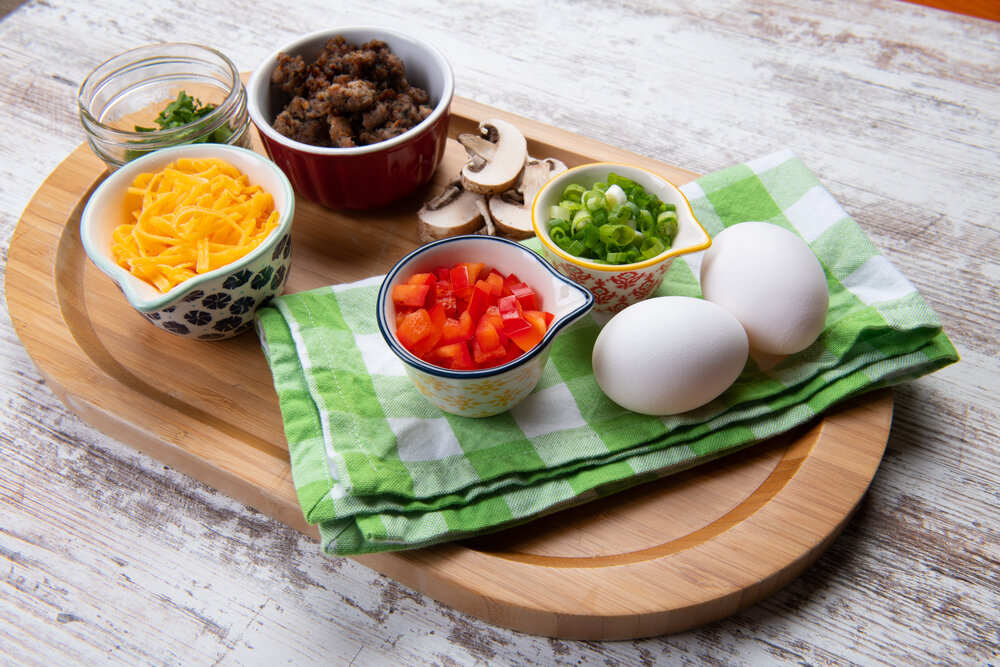
Photo credit: Joseph L. Murphy/Iowa Soybean Association.
Turkey, beef, pork, dairy, eggs and soyfoods are rich in protein and an excellent source of many vitamins and minerals. Protein is essential for muscle growth and maintenance. It gives structure to cells and helps transport nutrients around your body.
9. Technology
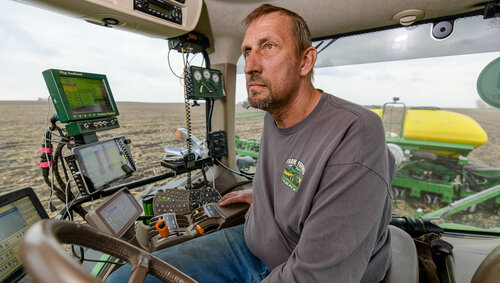
Jeff Frank serves on the board of directors' executive committee for the Iowa Soybean Association, and over the years, has been an early adopter of new technology. Photo credit: Joseph L. Murphy/Iowa Soybean Association.
Ag technology is continuously advancing, and tech-savvy farmers are continually evolving and adopting new practices. Iowa farmers use various technology on their farm, whether it is autosteer in a combine or aerial imagery. Precision agriculture allows farmers to use robust information technology to ensure that crops and soil receive specifically the nutrients needed for optimum health and productivity. This approach ensures precise amounts of fertilizer are applied only when and where the plants need it.
Jeff Frank raises corn and soybeans near Auburn and is the fourth generation to farm on the family’s Century Farm. He is passionate about implementing cutting-edge technology on the farm and was an early adopter of using drone technology to scout and collect data across fields.
10. Water Quality Initiatives
Water quality is essential. That’s why Iowa’s farmers are dedicated to implementing on-farm conservation practices to improve soil and water quality. A variety of annual and long-term conservation practices are used to help farmers maintain soil and water quality. Each farm is different, so various approaches are used depending on the needs of each farm.

Photo credit: Joseph L. Murphy/Iowa Soybean Association.
Some farmers use strip-till practices across their soybean and corn acres. Strip-till means that instead of disturbing or turning over all the soil before planting, only a small strip is tilled where the seed is planted. This method leaves most of the residue from last year's crop in the field, which helps hold soil and nutrients in place.
Buffer strips are another conservation practice used along waterways. The buffer strips are planted with permanent vegetation, like grasses, that slow water runoff, trap sediment and nutrients, and provide habitat for wildlife or pollinators.
Reducing sediment loss, sequestering carbon, and improving water quality also directly impact the bottom line of farmers and quality of life for our families, neighbors and communities.
When it comes to modern agriculture, both farmers and consumers benefit from Iowa’s global leadership. There is a lot to love and be proud of when it comes to the high-quality, nutritious foods being raised in Iowa, along with farmers’ passionate commitment to innovation and sustainability.